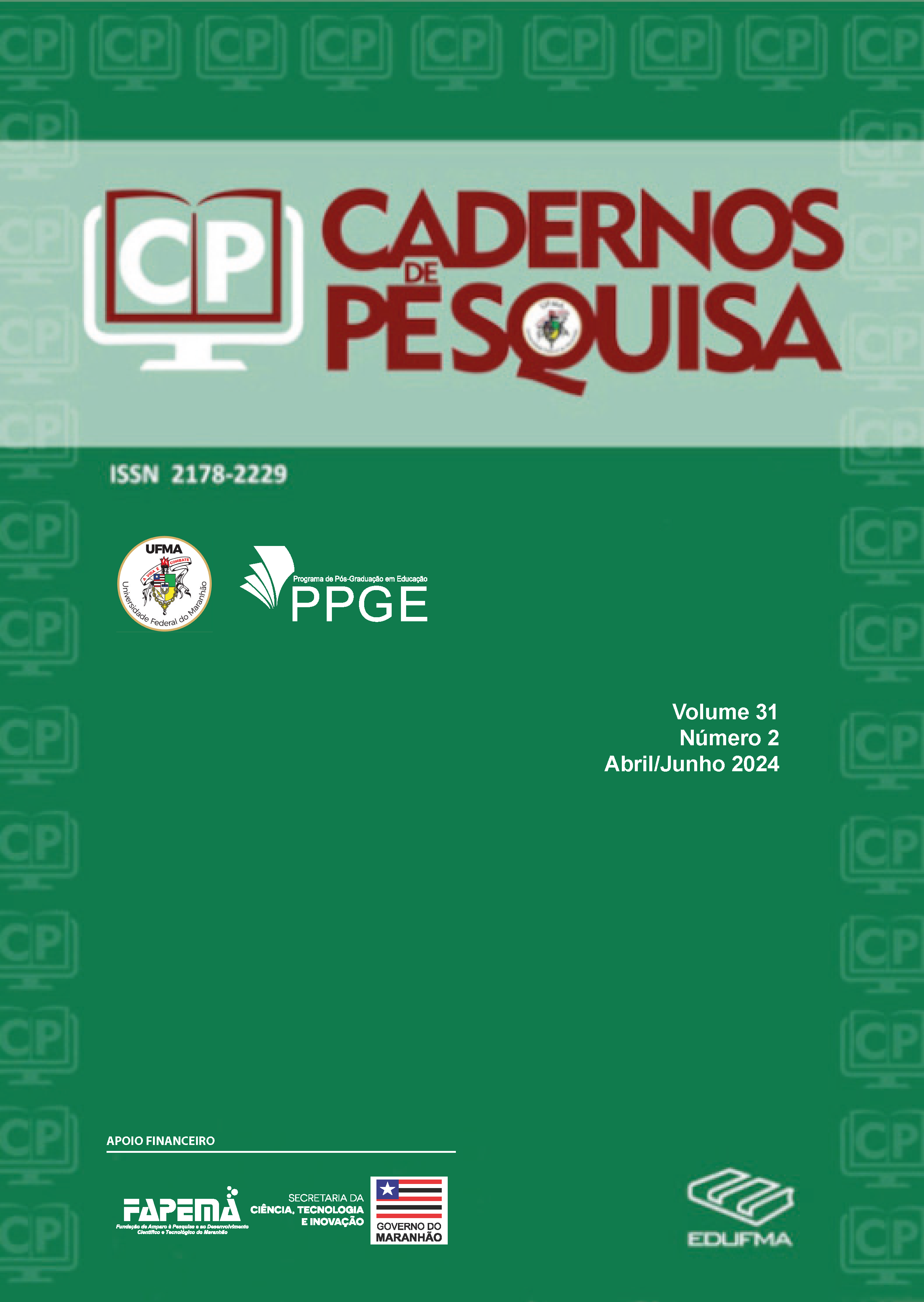Chinese policies of international understanding and internationalization of higher education (HEI): the example of Yunnan University (late 20th and early 21st centuries)
o exemplo da Universidade de Yunnan (final do século XX e início do século XXI)
DOI:
https://doi.org/10.18764/2178-2229v31n2.2024.36Keywords:
Internationalization of higher education, China, International mobility, Chinese studentsAbstract
The questions raised by our article are as follows: how does a Chinese university fit into national and regional IHE (Internationalization of Higher Education) and student mobility policies? How is it able to assert its specific characteristics and, if necessary, demonstrate its autonomy? China’s policy of IHE and encouraging international student mobility is currently part of an overall educational policy that includes five components: the desire to maintain China’s educational sovereignty, the reduction of inequalities between regions, the preference given to «hard» sciences, the search for a better balance between sending students abroad and welcoming foreign students, and the desire to maintain a strong commitment to Western societies. This internationally-oriented policy has a long history, and this article first looks at the macro level (central government) from the 1980s onwards (the «new era»). The regions themselves are developing
specific policies geared towards internationalization, in particular by offering favorable reception conditions
for foreign students, and good reintegration conditions for Chinese returning from abroad after graduation. We present (at meso level) the example of the Yunnan region (south-east China). The third part of the article is devoted to the investigation of IHE and student mobility policy at the level of one university in particular: Yunnan University (micro level). The main method used is the synthesis of Chinese texts not known outside
the country, and content analysis of official policy documents and websites at the three levels of central government, region and university.
Downloads
References
BENNETT, Milton James. Towards Ethnorelativism : A Developmental Model of Intercultural Sensitivity. In: PAIGE, R.Michael. (Org.) Cross-cultural Orientation: New Conceptualizations and Applications. New York: University Press of America, 1986, p. 27-70.
CHENG, Xi. Le développement de la politique sur l’élection des étudiants pour l’études à l’étranger depuis la Réforme et l’Ouverture (改革开放以来中国政府选派留学生的政策沿革). Overseas Chinese History Studies, Beijing, n.1, 1999. p. 37-44.
COSNEFROY, Laurent. L’impact de l’internationalisation sur les étudiants. In: COSNEFROY, L., DE KETELE; Jean-Marie; HUGONNIER, Bernard. et al. (Orgs.) L’internationalisation de l’enseignement supérieur. Bruxelles : De Boeck, 2020. p.127-154.
CUI, Yan Qiang ; LI, Yu Mei. Internationalization of Universities in the Context of the Belt and Road Initiative. Journal of Teacher Education, Chongqing, n.1, 2019. p. 83-91.
DE WIT, Hans; HUNTER, F. The future of internationalization of higher education in Europe. International Higher Education, Boston, n. 83, 2015. p. 3.
DRUCKER, Peter Ferdinand. The Age of Discontinuity. 1. éd. New York : Harper and Row, 1969.
HUGONNIER, Bernard. Stratégies et politiques des Etats en matière d’Internationalisation de l’Enseignement supérieur In: COSNEFROY, Laurent ; DE KETELE, Jean-Marie ; HUGONNIER, Bernard et al. (Orgs.) L’internationalisation de l’enseignement supérieur. Bruxelles : De Boeck, 2020. p. 5- 60.
KNIGHT, Jane. Updated Definition of Internationalization. International Higher Education. Boston, n° 33, 2003. p. 2-3.
LEFEBURE, Alessia. Les universités chinoises vont-elles quitter les classements internationaux ? The Conversation. https://theconversation.com/les-universites-chinoises-vont-elles-quitter-les-classements-internationaux-183151. Acessado em 1 de outubro de 2023.
Ministry of Education of the People’s Republic of China. 80.786 em Pequim, 61.400 em Xangai, 45.778 em Jiangsu, 38.190 em Zhejiang, 27.879 em Liaoning, 23.691 em Tianjin, 22.034 em Guangdong, 21.371 em Hubei, 19.311 em Yunnan e 19.078 em Shandong. http://www.moe.gov.cn/jyb_xwfb/gzdt_gzdt/s5987/201904/t20190412_377692.html. Acessado em 7 de outubro de 2023.
National Bureau of Statistics of China (2017) [online]. Disponível em http://data.stats.gov.cn/easyquery.htm?cn=C01. Acessado em 23 de setembro de 2023.
NKAKE, Lucie Mamie Noor. L’éducation à la compréhension internationale. 1. éd. Genève : BIE, 1996.
NYE, Joseph S. Soft Power and Higher Education. In: Forum for the Future of Higher Education (Arquivos), p.11-14, 2005.
Office of international Cooperation and Exchange. http://jlc.peuni.cn/info/1100/1179.htm. Acesso em 1 de outubro de 2023.
ROUIAÏ, Nashidil. Nouvelles routes de la soie, Belt and road initiative. [S.l]: Geoconfluences, 2018. Disponivel em : http://geoconfluences.ens-lyon.fr/glossaire/routes-de-la-soie. Acessado em 13 de setembro 2023.
RUI Yang. China’s Strategy for the Internationalization of Higher Education: An Overview. Frontiers of Education in China, Beijing, n.2, 2014. p. 151-162.
SODERQVIST, Minna. Internationalization and its management at higher-education institutions: Applying conceptual, content and discourse analysis. 1. éd. Helsinki: Helsinki School of Economics, 2002.
South & Southeast Asian University Network. http://www.sseaun.ynu.edu.cn/2017-11/27/c_679482.htm. Acessado em 16 de outubro de 2023.
STETAR, Joseph. et al. Soft Power Strategies: Competition and Cooperation in a Globalized System of Higher Education. In: PORTNOI, Laura. M. et al. (Orgs.) Higher Education, Policy, and the Global Competition Phenomenon. New York: Palgrave Macmillan US, 2010. p.191-203.
TEODORO, A. Conclusion. In: Contesting the global development of sustainable and inclusive education. 1. éd. New York : Routledge, 2020. p. 106 -110.
TEODORO, Antonio. The University as Contested Field: Sketching Possible Futures. In: Contesting the Global Development of Sustainable and Inclusive Education, New York : Routledge, 2020. p. 78-95.
UNESCO. Education à la citoyenneté mondiale. L’approche de l’UNESCO [online]. Disponível em org/new/fileadmin/MULTIMEDIA/HQ/ED/pdf/questions-answers-21jan-FR.pdf. 2015. Acessado em 26 de outubro de 2023.
UVALIC-TRUMBIC, Stamenka. Les moyens de l’internationalisation. In: COSNEFROY, Laurent ; DE KETELE, Jean-Marie ; HUGONNIER, Bernard et al. (Orgs.) L’internationalisation de l’enseignement supérieur. Bruxelles : De Boeck, 2020. p. 61-87.
VAN DER WENDE, Marijk. Internationalization of Higher Education in the OECD Countries: Challenges and Opportunities for the Coming Decade. Journal of Studies in International Education, New York, n. 11, 2007. p.274-289.
VERGER, Jacques. La mobilité étudiante au Moyen-Age. Histoire de l’éducation, n.50, avril.1991. p. 65-90.
WANG, Li Juan et al. Research on the Policy Support System of Higher Education Internationalization in Yunnan Province under the “Bridgehead” Strategy. China Management Informationization. Changchun ,n.4, 2015. p. 234-235.
Xinhua News [online]. Disponível em http://www.xinhuanet.com/2018-04/17/c_1122697495.htm. Acessado em 23 de setembro de 2023.
Downloads
Published
How to Cite
Issue
Section
License

This work is licensed under a Creative Commons Attribution 4.0 International License.
A Cadernos de Pesquisa está licenciada com uma Licença Creative Commons Atribuição 4.0 Internacional.




















